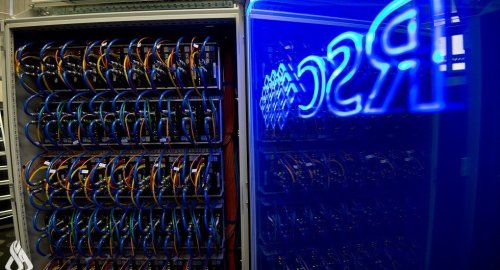
Japanese created a quantum processor with a record high speed of operation

- 12-08-2022, 09:40
INA-sources
Japanese physicists have created a record-fast two-qubit quantum processor based on cold atoms, capable of performing hundreds of millions of operations per second. This was announced on Monday by the press service of the National Institutes of Natural Sciences of Japan (NINS).
"Physicists have been speeding up the work of qubits for two decades to reduce the likelihood that random noise will cause malfunctions in their work. The ultra-fast execution speed of logical operations, each of which takes only 6.5 nanoseconds to calculate, allows calculations to be performed about two orders of magnitude faster than noise in the operation of qubits. In theory, this allows you to ignore their effect on the computer," the message says.
There are several types of qubits - quantum analogs of computer bits built on the basis of superconductors, single atoms or ions, as well as semiconductors. The first three types of memory cells are still leading in the "quantum race" to create increasingly complex computing devices, since their work is more convenient to control, and qubits of this type themselves make fewer errors in calculations.
One of the main obstacles to the further development of such calculating machines is that they spend a lot of time on performing even the simplest logical operations. In this respect, most quantum computers are inferior to their silicon counterparts by several orders of magnitude at once. This prevents complex calculations involving a large number of steps.
A group of Japanese physicists led by Kenji Omori, a professor at the National Institutes of Natural Sciences of Japan in Okazaki, solved this problem for quantum computers based on cold atoms. The role of quantum bits inside these machines is played by special particles, which scientists call Rydberg atoms.
They are rubidium-87 atoms, whose last electron was "pushed" a long distance from the nucleus with the help of special pulses of laser radiation. Due to this, the size of the atom increases by about a million times, which facilitates the manipulation of its quantum properties and allows you to place a large number of qubits nearby. The first quantum computer based on them was created in 2017 by a group of Professor Mikhail Lukin working at Harvard University.
Professor Omori and his colleagues accelerated the work of quantum computers based on Rydberg atoms by several orders of magnitude at once. This became possible thanks to the development of a new strategy for irradiating rubidium-87 atoms using ultrashort, but at the same time very powerful laser pulses. They simultaneously transfer neighboring atoms to the Rydberg state and force them to interact and participate in the calculation of logical operations.
According to current estimates of physicists, this whole process takes about 6.5 nanoseconds, which is about a hundred times faster than it was possible to achieve in the past on other quantum computers based on cold atoms. The researchers hope that their approach will lead to the creation of new computing machines capable of performing hundreds of millions of operations per second and solving complex tasks that are useful in practice.
Al-Sistani: Tomorrow, the 29th of Ramadan
- Local
- 25/03/29
SOMO: Iraq has the fourth-largest proven oil reserves in the world
- Economy
- 25/03/26












